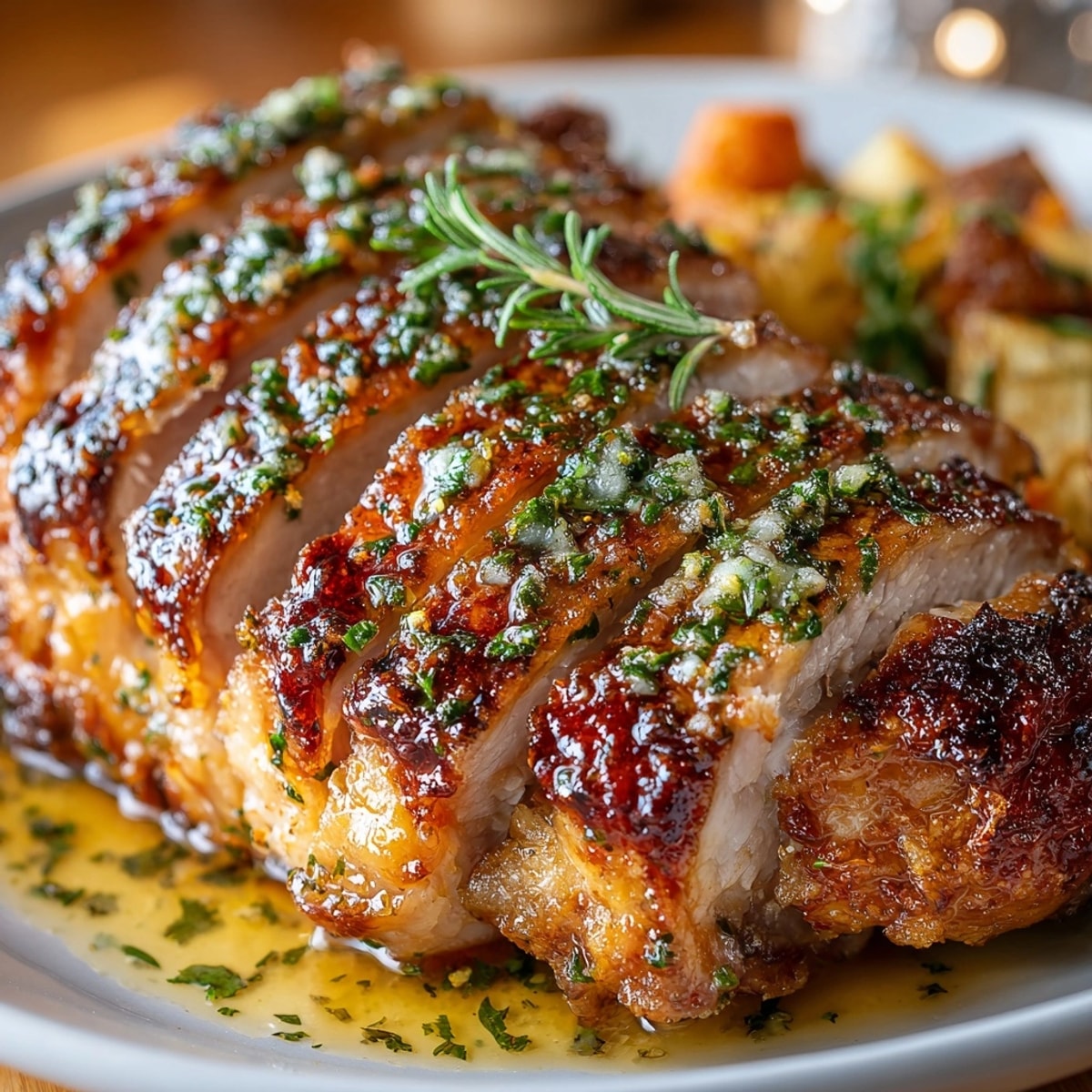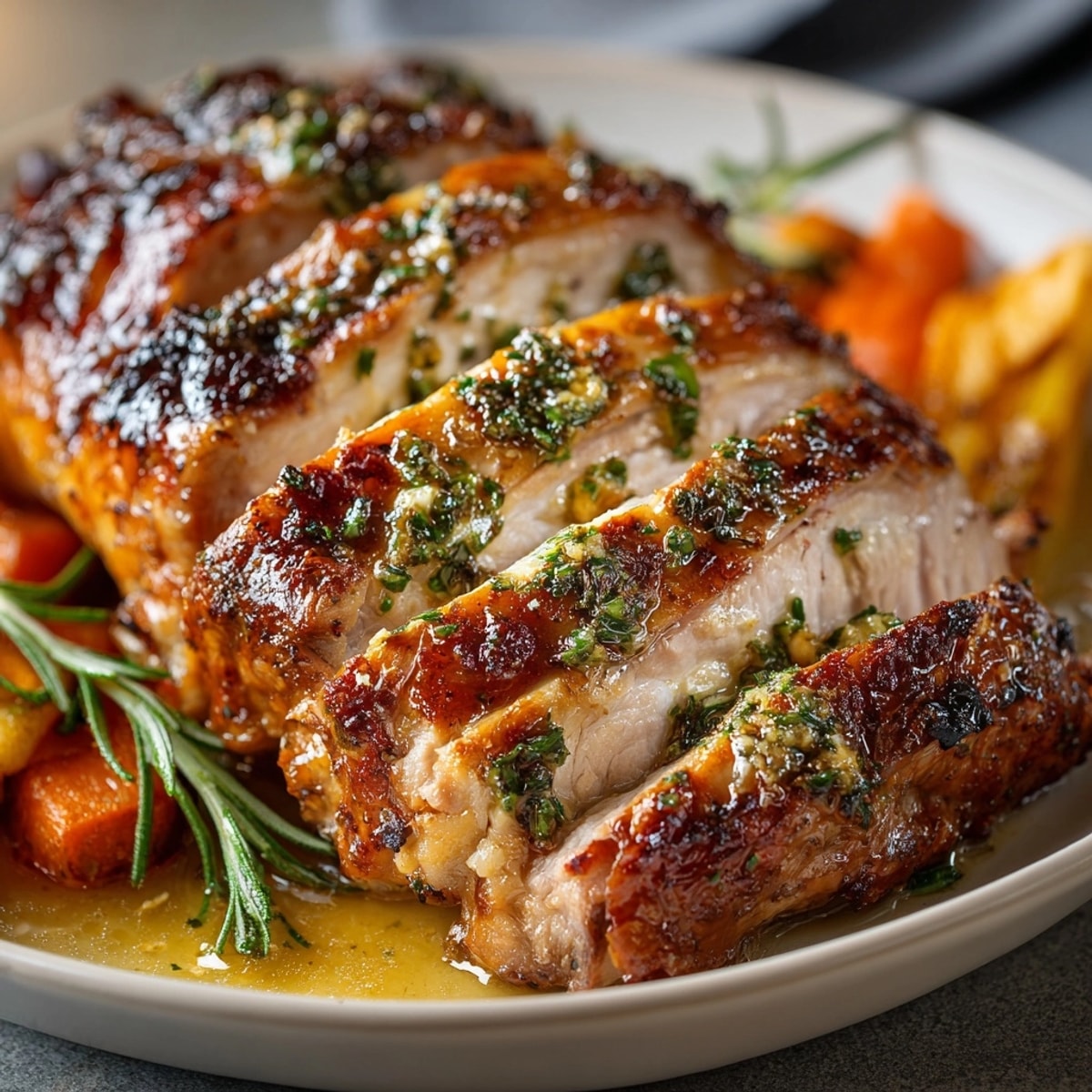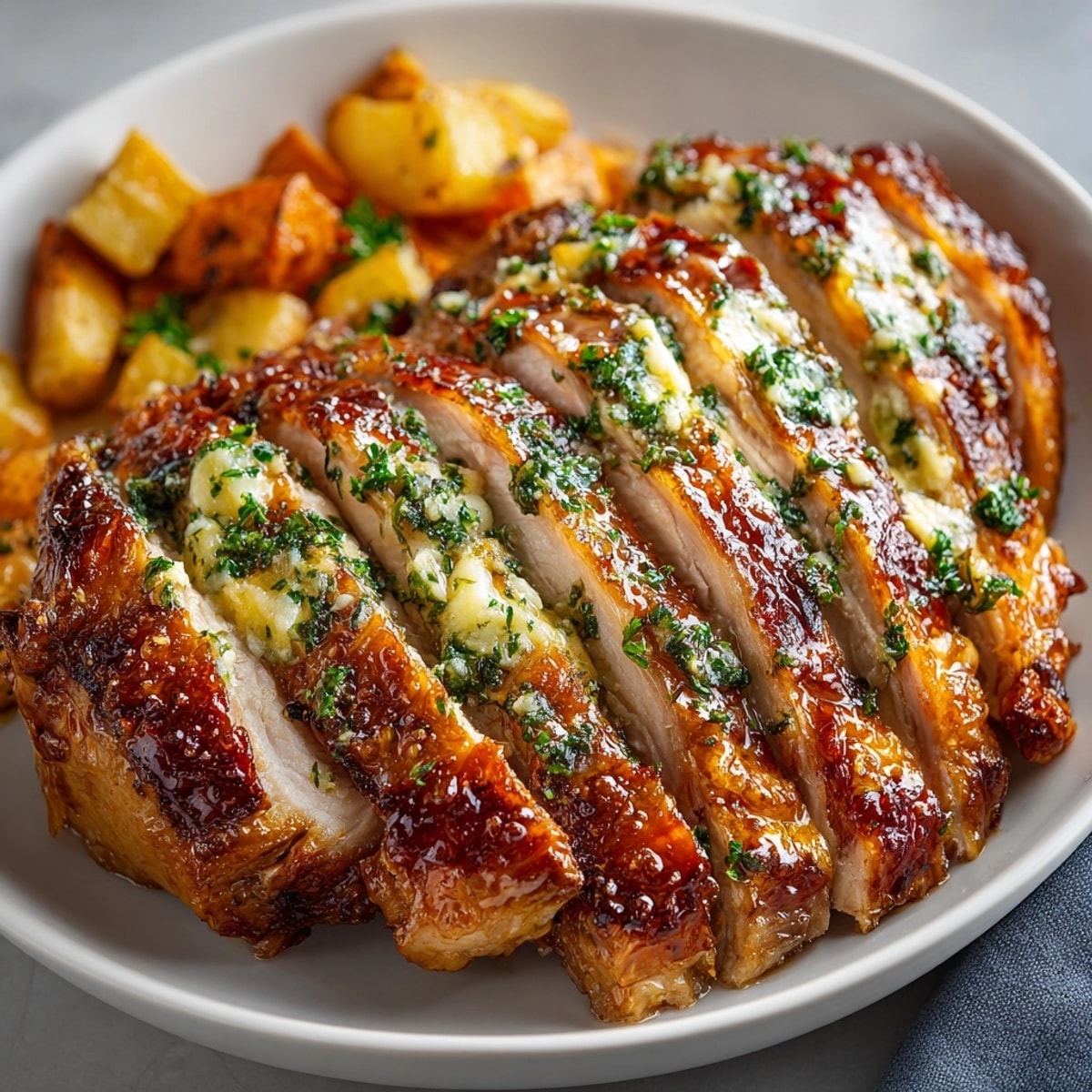 Pin
Pin This herb butter roasted turkey is the centerpiece my family waits for all year long and always delivers juicy slices wrapped in golden crisp skin. Rubbing aromatic butter all over and under the skin infuses every bite with rich flavor, making it perfect for Thanksgiving or any festive gathering when you want to impress a crowd.
Ever since I started adding plenty of fresh herbs and lemon zest to the butter, it has turned into a showstopper. The fragrance fills the house and carving it with everyone waiting around the table is always the best moment.
Ingredients
- Whole turkey: choose a well-chilled bird, thawed if frozen and avoid self-basting turkeys so you can control the seasoning
- Kosher salt and black pepper: classic seasoning locked in from the start and after years of testing I have found this ratio seasons every bite perfectly
- Unsalted butter: softened butter makes mixing easy and keeps the turkey moist while roasting
- Garlic: use fresh and mince finely to blend smoothly into the butter
- Fresh parsley: choose flat leaf for best flavor and a clean herbal note
- Fresh sage: soft velvety leaves add earthy depth my secret for turkey that tastes woodsy
- Fresh thyme: tender lemony stems that lighten up the richness always use sprigs with green pliable leaves
- Fresh rosemary: pungent and piney crushed gently before chopping for even more aroma
- Lemon zest: brightens and lifts the whole bird always use a fresh lemon and zest before juicing
- Large onion: quartered into big chunks helps flavor the pan juices and keeps the turkey cavity moist
- Carrots and celery: rough chop for a classic aromatic bed and good gravy base
- Lemon: halved and tucked inside gives a juicy citrus steam that works magic on dryness
- Fresh thyme and rosemary sprigs: tucked in with the vegetables and inside the bird for extra layer of flavor
- Low sodium chicken or turkey broth: pour this into the pan so the bottom never dries out and it is the key for pan gravy
Instructions
- Prep the Oven and Turkey:
- Position your oven rack so the roasting pan sits in the center of the oven. Preheat to 325 degrees F. Remove giblets from the turkey cavity. Rinse the bird and pat dry all over and inside with paper towels.
- Season the Inside:
- Sprinkle kosher salt and black pepper generously inside the main cavity. This step flavors the meat from the inside out while roasting.
- Make the Herb Butter:
- In a mixing bowl mash softened butter until smooth. Stir in minced garlic chopped parsley sage thyme rosemary fresh lemon zest salt and pepper until you have a homogenous green flecked butter.
- Rub the Turkey:
- Carefully slide your fingers under the skin around the breast and thighs without breaking it. Spread half of herb butter generously under the skin smoothing it as far as you can reach. Rub the rest all across the turkey skin and legs for even coverage.
- Stuff and Arrange Aromatics:
- Stuff the inside of the turkey with quartered onion lemon halves and herb sprigs. Scatter carrot and celery pieces in the bottom of a large roasting pan and place the turkey breast side up on a rack over the vegetables. Tuck the wings firmly under the body.
- Add Moisture to the Pan:
- Pour chicken or turkey broth into the base of the roasting pan. This keeps the meat juicy and will become the foundation for your gravy.
- Roast and Baste:
- Put turkey in the oven uncovered. Let roast undisturbed for 2 hours. Baste all over with pan juices every 45 minutes. If the skin is getting deeply browned before the end tent loosely with foil.
- Crisp the Skin:
- In the last hour increase oven temperature to 400 degrees F. Baste again every 30 minutes. Roast until the thickest part of the thigh reads 165 degrees F on a meat thermometer. Total roasting time will be about 3 to 3.5 hours.
- Rest before Carving:
- Remove turkey from oven. Tent loosely with foil and rest for a full 30 minutes. This redistributes juices guaranteeing moist slices. Carve and serve with all the delicious pan juices.
 Pin
Pin My favorite way to upgrade the herb butter is to grate the lemon directly over the bowl so every zest spray lands in the mix. I still remember the first time my youngest insisted on helping rub in the butter and we made the juiciest turkey ever thanks to all those helping hands.
Storage Tips
Store leftover carved turkey sealed and chilled for up to four days. For longer storage slice and freeze in airtight containers for up to three months. Always cool the turkey fully before wrapping to preserve moisture. I recommend storing pan juices separately to spoon over when reheating.
Ingredient Substitutions
If you cannot find fresh herbs use half the amount of dried. Dairy free butter substitutes work well for non dairy guests. For added richness use a splash of olive oil with the butter. If you only have salted butter reduce the added salt to prevent over seasoning.
Serving Suggestions
Serve slices with pan gravy mashed potatoes and your favorite roasted vegetables. Leftover turkey makes amazing cold sandwiches turkey salad or gets warmed in quesadillas with a sprinkle of cheese. For something special brown a few turkey pieces in a skillet for hash the next morning.
 Pin
Pin With just a little prep and generous herbs this turkey always gets rave reviews. Serve it at your next gathering and you will savor every juicy bite.
Recipe Questions
- → How do you ensure the turkey skin gets crispy?
Increase the oven temperature during the last hour of roasting and baste the turkey regularly for a golden, crisp skin.
- → What herbs work best for the butter mixture?
Fresh parsley, sage, thyme, rosemary, and lemon zest add bright flavor. Dried herbs can be substituted if fresh are unavailable.
- → Is this dish suitable for gluten-free diets?
Yes, it's naturally gluten-free when you use a certified gluten-free broth. Always check labels for hidden gluten.
- → Can leftovers be used for other dishes?
Leftover turkey is perfect for sandwiches, salads, or soups, and pan drippings can be made into rich gravy.
- → Which wine pairs well with this turkey?
Chardonnay and Pinot Noir both complement the herb butter and flavorful meat beautifully for festive occasions.
- → What tools do I need for roasting?
A large roasting pan with rack, basting brush or spoon, meat thermometer, chef’s knife, cutting board, and aluminum foil are recommended.